1966 is known for many things. The first screening of Star Trek, the Cultural revolution in China, Luna 9 making the first successful soft moon landing. Plus a host of other things including a certain football match. But it was also the year that saw the launch of the last but probably the best true Exa camera.
Ihagee made the Exa series of 35mm SLR cameras in Dresden during the East German era from 1951. These were simplified but reliable version of the flagship Exakta SLR cameras (think Nikkormat to the Nikon F). They share the same lens mount but usually have more limited features.

The name Exakta of course matters in the history of SLR development.
It really matters.
Ihagee’s beginnings
Founded in 1912 by a Dutch national Johan Steenbergen, Ihagee set up shop in Dresden. The location made sense, Dresden was one of the world’s key centre for camera production at the time. Johan had trained at Ernemann, another legendary 19th century Dresden Camera maker better known now for it’s role in Zeiss Ikon.

Interestingly Ihagee went bust in the post WWI German economic collapse, but would rise again in the 1920’s. It produce initially a range of conventional cameras for the time including folding cameras that sold well.
But it would be their move into single lens reflex technology that would most define the company.

It don’t mean a thing if you ain’t got that Single lens Swing
The move into SLR was not untypical in 1920 they began making their series of Paff Reflex cameras. The design of a box like camera with a waist level finder was not unique or new. The Monocular Duplex, the world’s first production SLR unveiled in 1884. The most famous of this style is arguably the the Graflex Reflex first sold in 1898.

Ihagee Kamerawerk. Steenbergen & Co., Dresden, Duitsland, CC BY 4.0 https://creativecommons.org/licenses/by/4.0, via Wikimedia Commons. Click on image to see on wikicommons
But Ihagee had caught the SLR bug. The next major step was the 1933 the VP Exakta. This used 127 film known as Vest Pocket film (hence VP) after Kodak’s line of compact folders.
But this was no simple folder.

What you have is arguably the first modern style SLR with interchangeable lenses & focal plane shutter in 1933. The later pictured VP Exakta B model even had a winding lever. The only difference between a modern SLR is the waist level finder and the electronics.

A little Exakta Kine Night Music
Ihagee were on the ball and had noticed the rise of the new 35mm format. They basically took the design of the VP and adapted it for the 35mm. The 1936 Exakta (aka the Exakta Kine) was the world’s first true production 35mm SLR.

Its influence was massive and Ihagee would remain a key player in SLR design until the 1960’s. The company revised the design over the years notably in 1950 introducing the Varex Exakta series which featured pentaprism head. This was only 2 years after the first production Pentaprism SLR, the Italian made Rectaflex A 1000 .
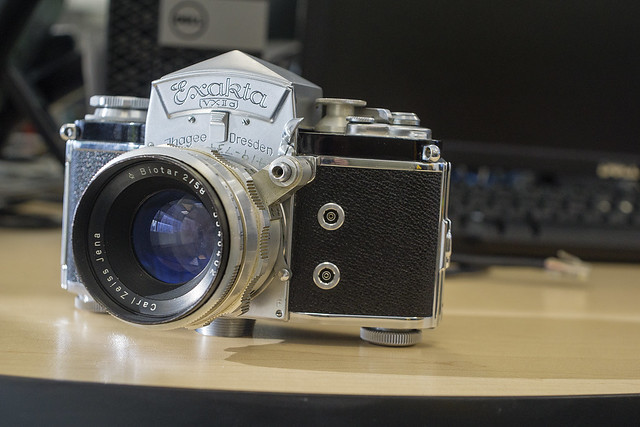
The attention to Detail on these cameras is astounding. Made in the late 1950’s , the VXIIa (Varex IIa) shown above was made with incredible craftsmanship. (you can read Alex Luyckx review of this here). Even though the Exa 500 and other models would update for the 60’s they remained stylish.
Capitalism behind the wall
What is striking is that innovation and individualisim came despite being behind the post war Iron Curtain. Most of the Dresden camera industry was pooled into massive state run conglomerates like Pentacon VEB. But Ihagee ran stand alone. The company weirdly had some protection due its Dutch owner.

Steenbergen had fled Nazi German in 1942. His wife Elizabeth was of Jewish decent but the couple had had some protection as he was a Honorary Consul for the Netherlands. He refused however to had over the company to the Nazis for war production and eventually managed to leave settling finally in the US.
Although he returned to West German (again becoming his country’s honorary consul) Steenbergen sadly never returned to Dresden. Although he had little control over his company, the East German DDR government decided against fully nationalising a company owned by a Western European. It was only after his death in 1967 that Ihagee’s protection waned. By the 1970’s, it was absorbed into Pentacon VEB.
Last of The classics but not the End
True Ihagee SLR cameras would end in to the 1970’s with simpler VX 500 and the more high end the Exakta VX1000 (reviewed here on Aly’s Vintage Camera Alley ). Arguably the most advanced model ever made although it has its critics even in the Ihagee fanboy world.
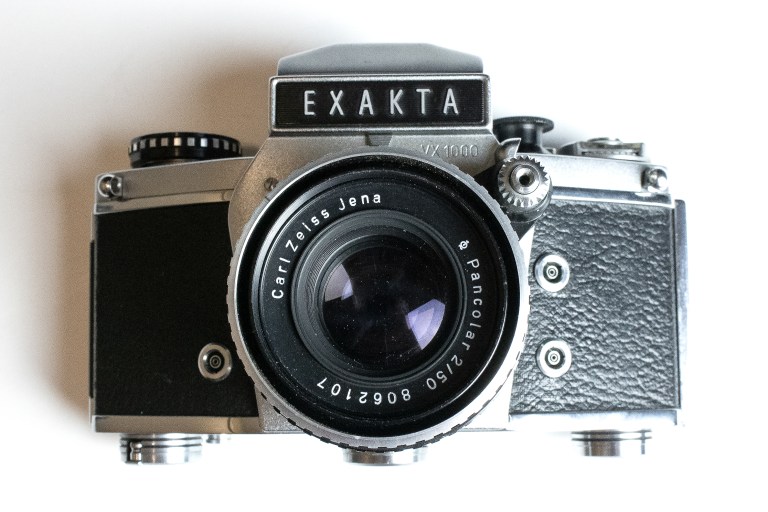
But the Exakta name survived beyond. Pentacon made the Exakta RTL 1000 which retained the exakta mount.
There are later Japanese made models. Some accept Exakta lens (notably rebadged Topcon models) but most use M42 or later K-mount lenses (Yup Cosina CT series rebadges are prevalent as usual). There is even a rarely seen Chinese Exakta HS-50. This uses a Minolta SR/MD mount. Not surprising as it’s rebadged Seagull DF-300 which is almost just a rebadged Minolta X-300 (made in the same factory).
The Exa series
In 1951 Ihagee launched the Exa. A budget version of the then Exakta Varex (Exakta V) camera. It had a guillotine shutter rather than the focal plane shutter of it’s more expensive sibling and the mirror did not automatically return. Notably they shared the same Exakta Bayonet mount and unlike many later Exa models had changeable viewfinder.
The 1959 Exa II brought back a focal plane shutter. Although the mirror remained locked up until you wound on. The mislabelled Exa I followed in 1963 and the Exa IIb which added mirror return in 1965
Our Exa 500 (aka the Exakta 500 (likely US export) or Exa VX200) would be the last of the true Ihagee Exa models. The name would limp into the 1970’s under VEB Pentacon but were re-issues and adapted models using the M42 mount. Mike Eckman does an excellent review of the 1985 Exa 1c, a Certa made reworking of the Exa 1 with M42 mount).
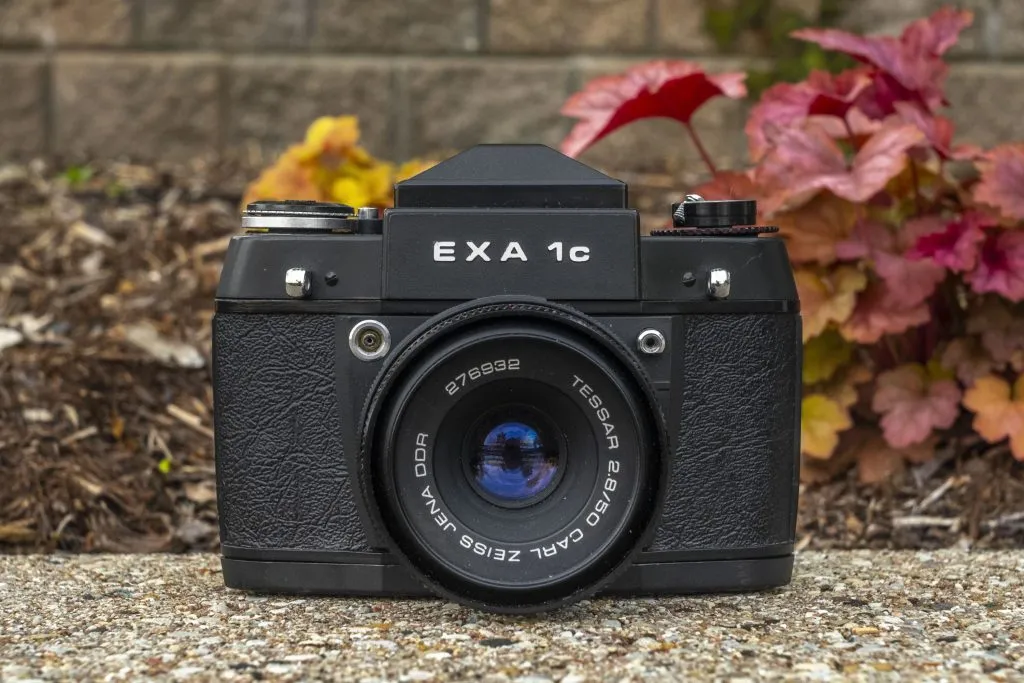
Exa 500 Core Spec
The Exa 500 is very similar in layout and spec to the Exakta VX500. lacking just the changeable viewfinder.
It has a vertical cloth focal plane shutter with instant return mirror set up. This is capable of speeds between 1/2 to 1/500 sec + B. There is no metering and the camera has a non changeable Pentaprism head. There is no flash mount but a pc sync socket. This lets you use both M class flash bulbs and electronic flash units (the latter sets for 1/60). The shutter speed dial has a white dot that you line up to either the flash or bulb symbol.

Exa 500 Build
Wonderfully finished camera of another era with nicely etched marking on the body. Although not quite to same level as a pre-60’s model, there is attention to detail that you just wouldn’t see on anything short of Leica M series.
The body although has a vintage style is notable for it irregular hexagon shape. The shutter button sits on the front but on the side for yur left hand. Has a standard winder but worth noting you must set manually the film counter which counts down not up.
To load you completely remove the back. The camera has a detachable take up spool like many Eastern European cameras. I assume to allow home film rollers to use another cassette to wind into. Unlike earlier Exa & Exakta models you don’t need to trim the film to load.
Viewfinder
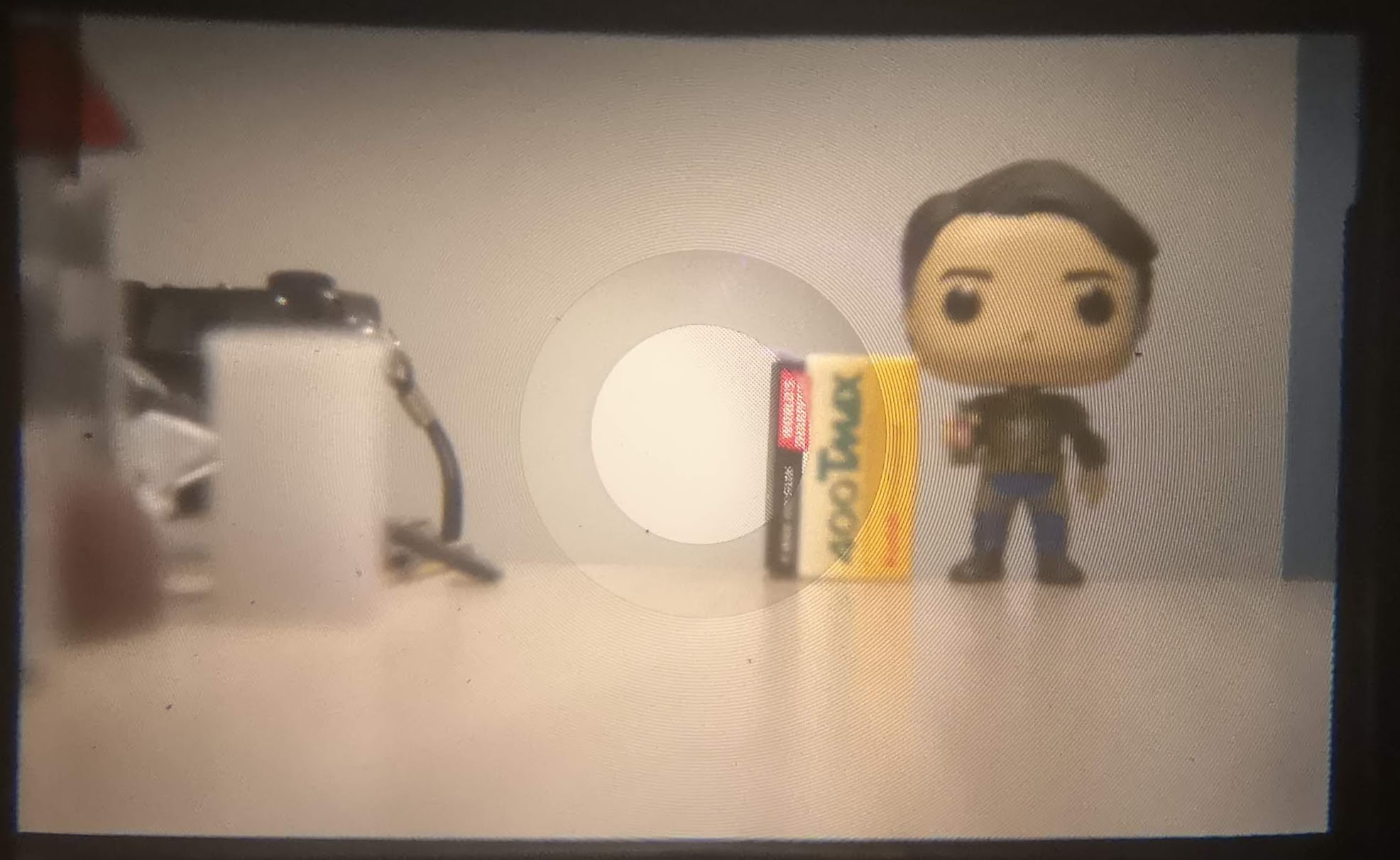
The viewfinder is quite bright, with a Fresnel glass screen with micro-prism disc surrounded by a matt collar. A warning flag appears in the finder to remind you to wind on after each shot
It’s an okay screen although I’d always prefer a split image rangefinder.
Lenses
Over 2000 lenses made for the Exakta mount 😲. Some of the Topcon SLR bodies made by Tōkyō Kōgaku also used the mount. Some later Exakta labelled models are actually rebadged Topcon models both in Exakta but also pentax K mount.
Ihagee didn’t make them in house so a range of suppliers made them. East German companies including Meyer-Optik & Carl Zeiss made the bulk of them. But there were others some from West German makes notably Schneider-Kreuznach. But others from father afield including the likes of Pentax, Nikon and Olympus.
Ihagee revised the mount adding an extra external bayonet for lenses that required a wider aperture than the original internal bayonet would allow for. The Exa 500 has that revision but like other later cameras also has the internal bayonet. This allows it to work peachy with older internal mount only lenses.
Mines came with a mediocre optically Cooke triplet Meyer-Optik Gorlitz Domiplan 2.8/50. This was one of the standard kit lenses with the Exa 500 but you might want to seek out the other common kit lens the 2.8/50 Carl Zeiss Jena Tessar lens.
Exakta Lens types
Leaving the bayonet changes aside there are 4 slightly different groups of lenses. The differences depend on how auto the aperture is.
Both lenses for the Exa 500 I’ve mentioned are in the latest group. The so called automatic type have a spring loaded lever that covers the shutter button. The lens is held wide open by this no matter what aperture you have set. When you depress the lever to take the shot it automatically closes down the aperture. It will then open the aperture back to wide on release. This also lets you do DoF preview as well which is nice on a basic camera.
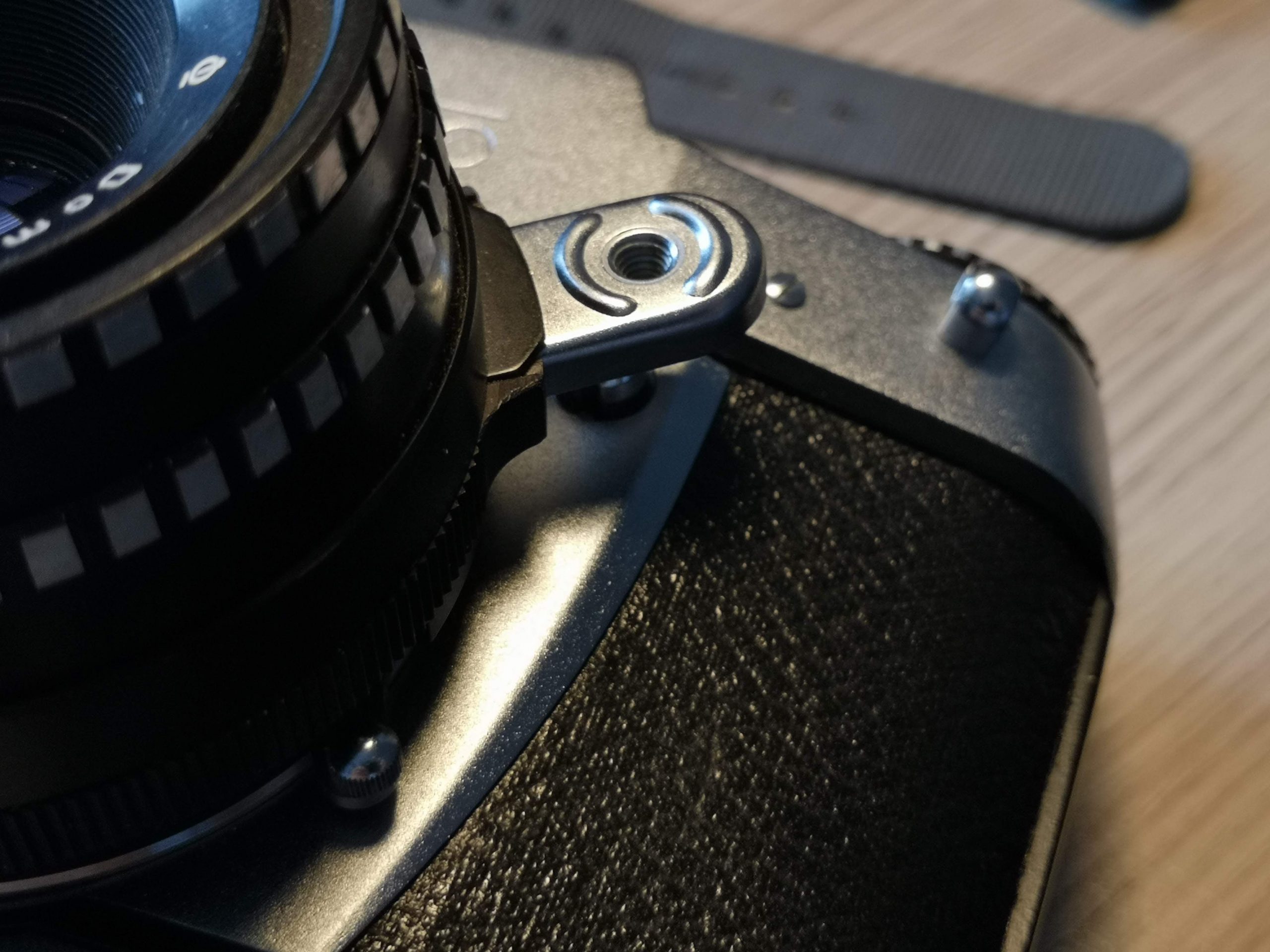
The Earliest lens are not so user friendly. They had no auto stop down . You need to focus with the lens wide then stop the lens down manually then reframe.
Later preset lenses allow you to lock your preset your aperture but the lens would remain wide until you were ready to shoot. You’d then move the aperture control ring as far the locked preset. Semi automatic lenses followed these. Working much like automatic lenses except you needed to manually reset them after taking a shot. Our Exa 500 will work with all of these.
The Exa 500 will work with longer than 200mm lenses but you loose some of the frame in the viewfinder. Watch out for Exakta Real lenses. Steenberg before his death briefly set up in West German Ihagee Kamerawerk AG (aka Ihagee West) after winning the rights in court to use his company’s name. Their Exakta Real camera is similar to the Dresden Exaktas but actually had different mount.
Exa 500 In Use
In someway this is similar to any other fully manual film SLR that lacks metering. Loading is straightforward but mines was pretty hard to get the back off. You need to remember to set the film counter on a dial around the rewind. You can also set a ISO speed reminder here.
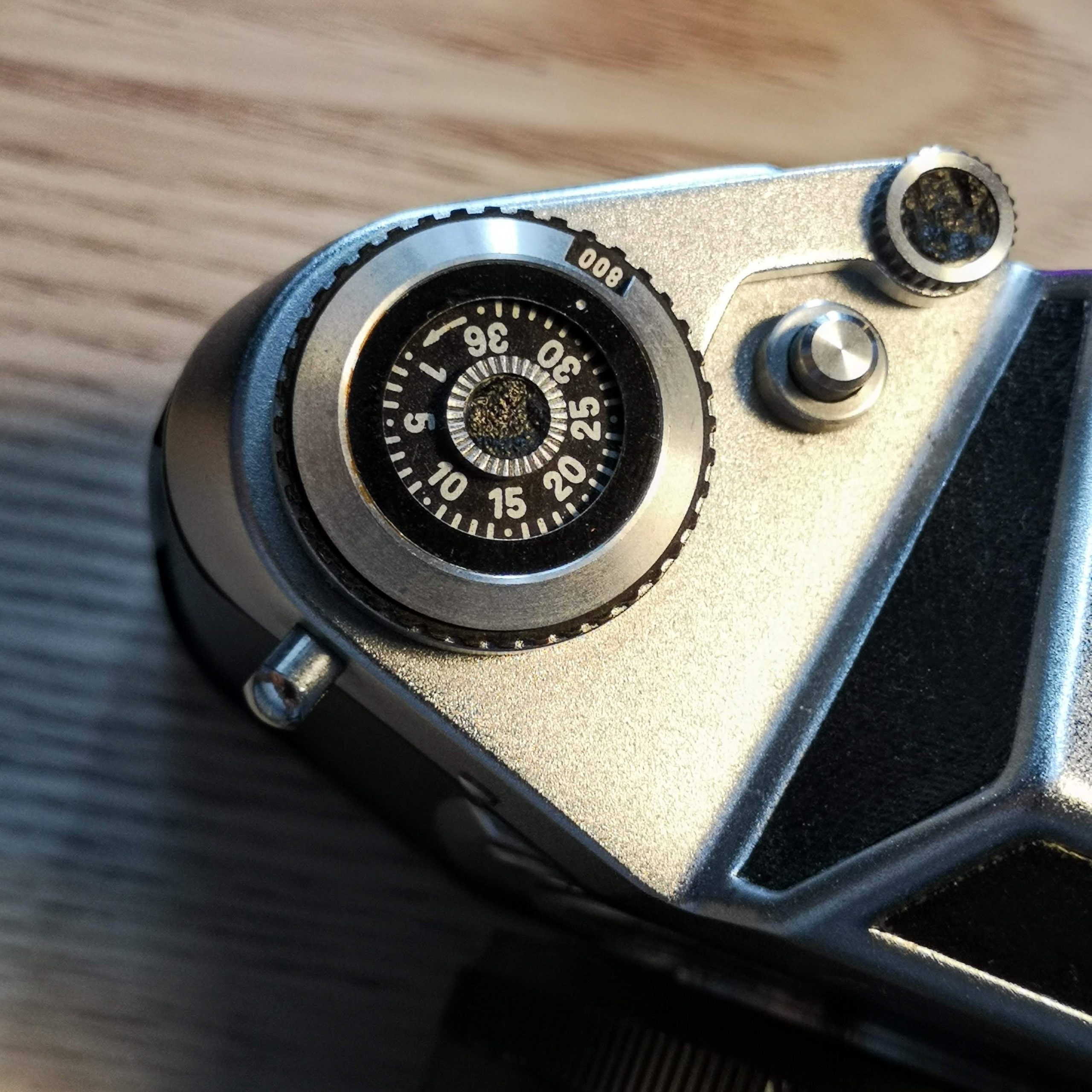
Shutter speed is set on the dial that sits over on the other side surrouning the rewind knob. A shutter lock switch sits on the rear which whilst helpful, tended to get bumped on in my bag.
The shutter slap is pretty loud but typical for a camera of it’s vintage. It’s a hefty at 660gms without lens but not untypical for a mid 60’s camera. It’s actually lighter by 100gms than Nikon’s entry level Nikkormat FT & FTn models that were sold at the same time.
To rewind you need to depress button on the top ad use the modern rewind knob.
There are 2 issues which make this camera quirky but potentially a pain. They are shared by other Exa & Exakta models. Firstly they have a shutter release button that sit on the front. Not that unusual in the time but it’s on the other side meaning you use your left hand
The other issue is the width of the camera. The thin hexagonal shape is much wider than most SLRs of the time and that makes it harder to hold
Issues
Unbeknown to me this camera had some common issues. All seemed fine. But either the mirror was intermittently sticking or one of the cloth shutter curtains had a partial fault.

These are both common issues and actually can be fixed easily. If you have the time and skill or are happy to pay someone. I am not that person. And sadly this happened when I had my Nikon FE in for repair and a Kiev-6C waiting service. I had neither the cash nor the time, energy & non shaky hand to DIY. I’ve added some repair links at the bottom of this post.

Results
Bar sticky mirror or blades the cameras shutter broadly worked well enough and my shots came back well enough exposed.
The lens is neither fast nor a classic keeper with a triplet design. But it was okay for what it was. Its a a soft lens which worsens below f/5.6 and to the corners. It’s not speedy with a maximal f/2.8 aperture.
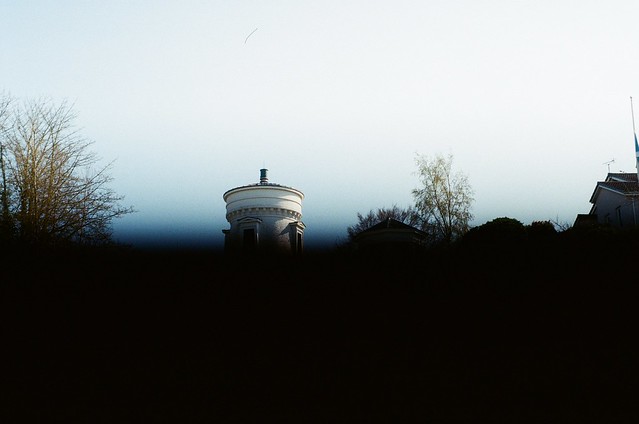
Granted shutter issues may have influenced my views but from what I’ve read this really isn’t a lens to write home about. I would try to get the Carl Zeiss Jena if you have a chance.
Final Thoughts
On a plus this breathes history. It is one of the easier cameras in the Exakta/Exa series to live with. The only notable absent features are the interchangeable viewfinders of the late Exakta models and a slightly slow shutter. You are also using one of the longest running film SLR series with models with same mount dating from the Mid 1930’s to the 1970’s only beaten by Nikon whom achieved a 60 year run from Nikon F mount cameras from their first F to the last F6.
For a camera of it’s time it is easy enough to live with. Certainly one for the left handed of you like all Exakta & Exa models.
But my Nikkormat FTn which launched just a year later is much easier to hold and has TTL in viewfinder metering and in viewfinder shutter display. Plus the shutter is on the right side.
Whilst the the Nikkormat is a classic from the early Nikon SLR days, the Exa 500 is a camera from the twilight years of the company that started it all.
Despite my issues these are well built reliable machines that are easy to repair. Mines I’m donating to the wonderful Peggy Marsh at Camera Go Camera whom has more patience and skill than me to get this fully functional.
Sources/References/Info
- Exa 500 Manual – as usual on the wonder that is Mike Butkus’s site
- Ihagee Page – On camera-wiki – starting point for this and other related models
- Johan Steenberg’s Biography – from Ihagee.org. Site has a massive list of resources
- Exa 500 Promo leaflet – from Ihagee.org
- History of Ihagee – at the Exakta Circle site with link to a comprehensive 159 page history book by Peter Langdon
- Overview of Exakta lens system – at wrotniak.net
- Exa 500 shutter repair – from Simon Hawkett’s site
- Repair Manual for Exa Series (inc 500) – at learncamerarepair.com
- Exa 500 Reviews

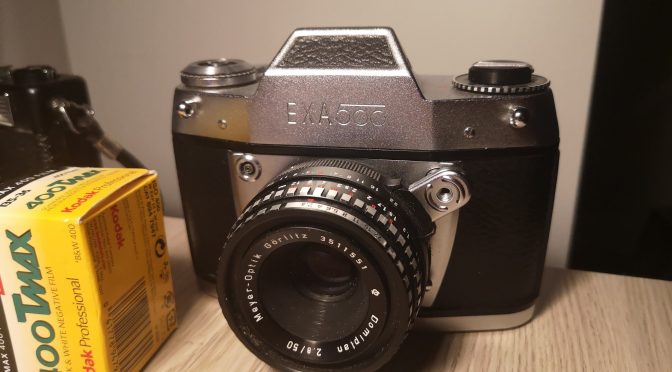
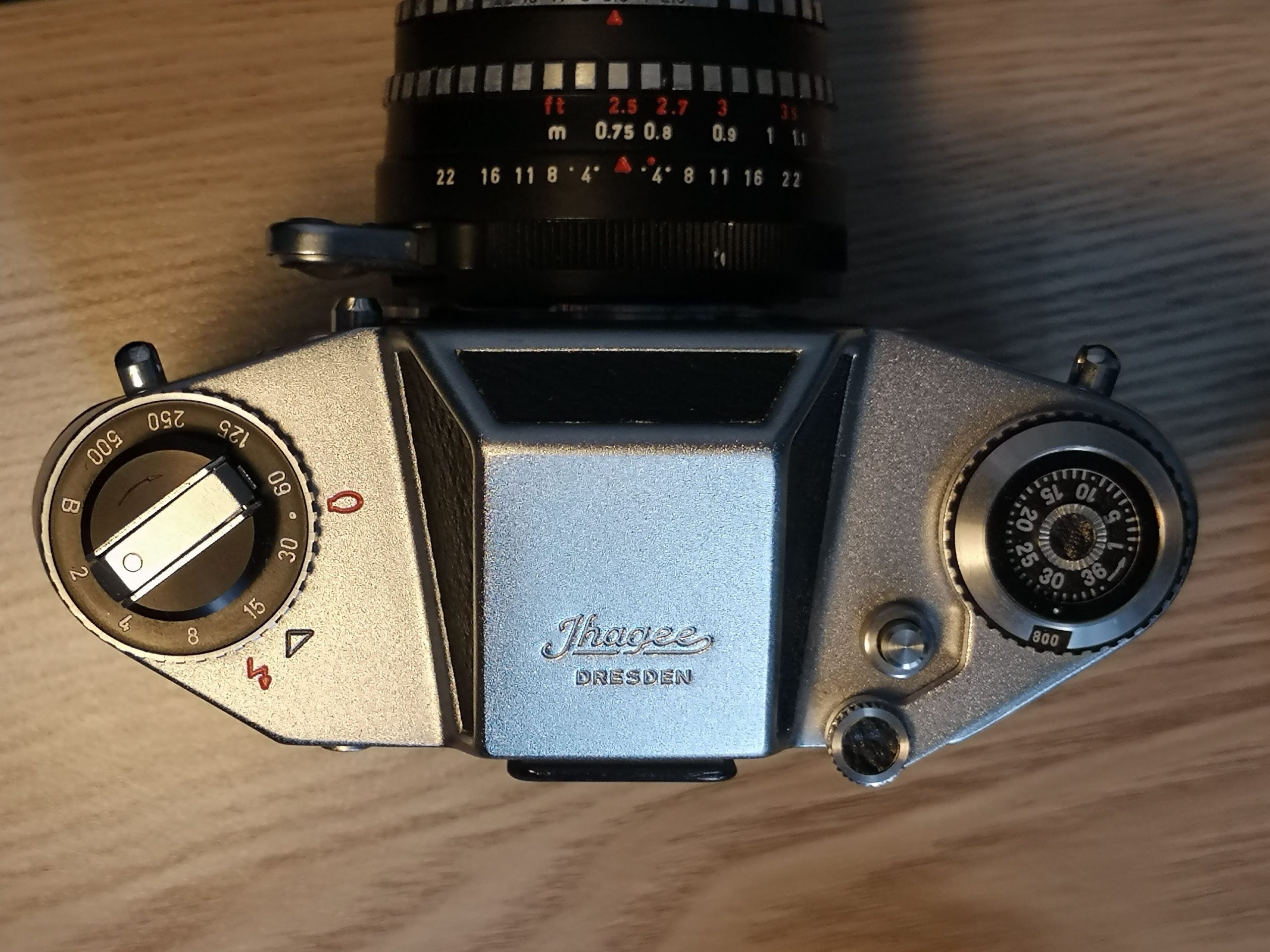



The left handed shutter release was intended to help hold/focus the camera more steadily. Hard to overcome the conditioning that wants to use a different finger to make the exposure, though
Yeah true enough. I’m just use to RHS thumb buttons and the odd RHS front plate shutter button
The name of the founder of Ihagee was Steenbergen, not Steenberg, as in the article. Also, the VP Exacta used 127 film, not 126.
Ta and well picked up. The 126 goof is not great given 126 film wasn’t introduced until the 1960. Will tweak.